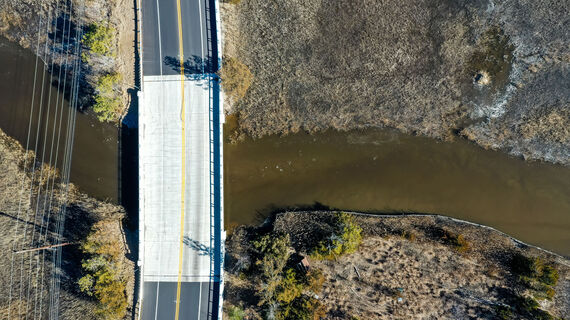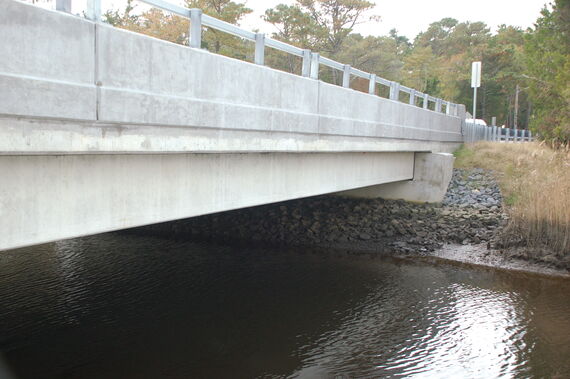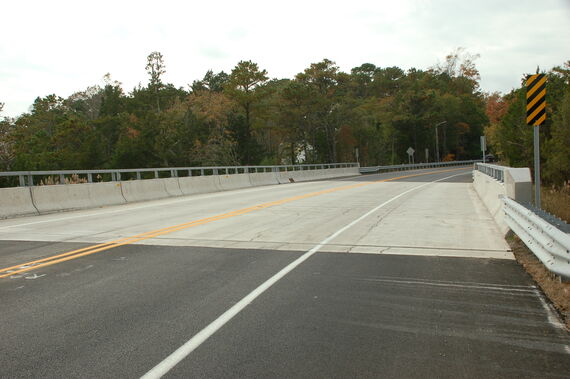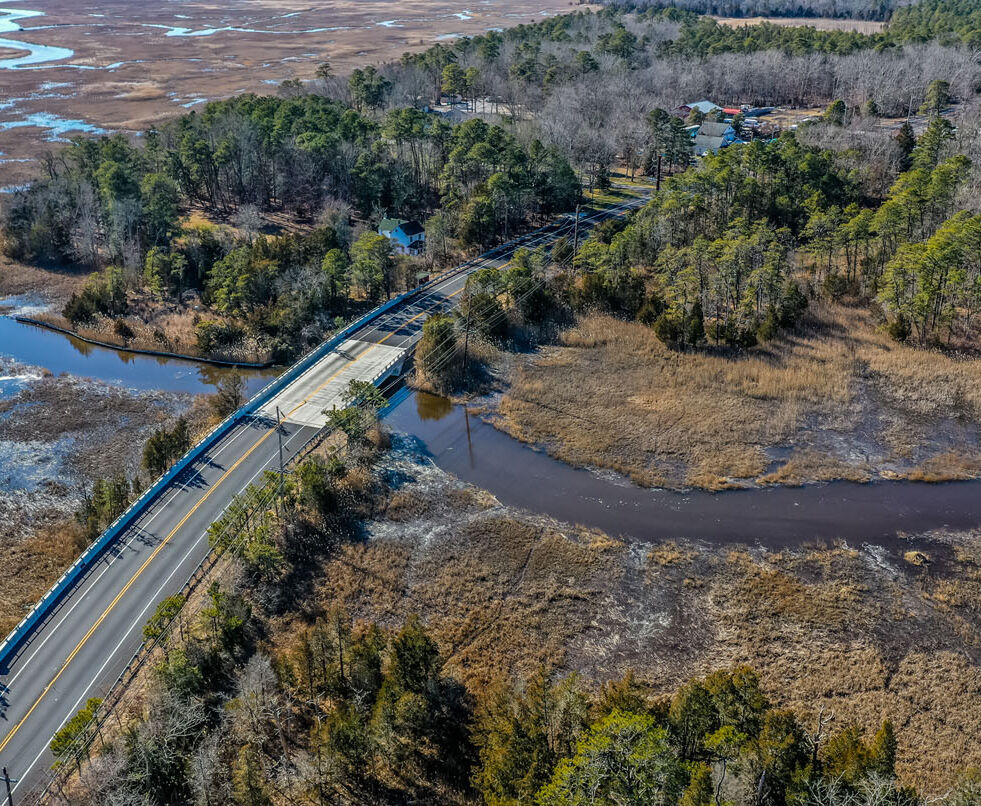
ROUTE 9 BRIDGE OVER JOBS CREEK
BURLINGTON COUNTY, NJ
McCormick Taylor completed the concept development, preliminary engineering, final design, and construction engineering services associated with the replacement of the bridge to improve substandard roadway geometry and maintain a safe mode of transportation across Jobs Creek for all roadway users.
THE CHALLENGE
The Route 9 Bridge over Jobs Creek was deemed structurally deficient due to the poor superstructure condition as well as functionally obsolete because of the geometry of the bridge and adjacent roadway. The project was identified through the New Jersey Department of Transportation (NJDOT) Bridge Management System screening. The initial improvement concept was a deck replacement that could be completed by the NJDOT in-house design team. However, the substructure was investigated during concept development, and it was discovered that the concrete integrity of the abutments had deteriorated with active Alkali-Silica Reaction. This resulted in additional rehabilitation or replacement evaluation beyond deck replacement. The existing shoulder width on the bridge was 1.5 feet along the northbound lane and 4.5 feet along the southbound lane, which were substandard.
Route 9 is a significant Coastal Evacuation and Recreational Route to the Jersey Shore, which meant that northbound and southbound traffic across the bridge had to be maintained during construction without detours. Based on input from local officials, the design incorporated three stages of construction which maintained one lane of traffic in each direction.
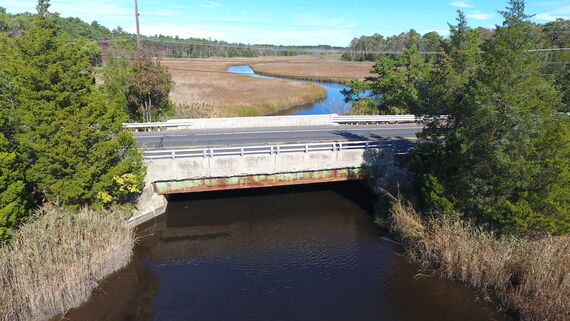
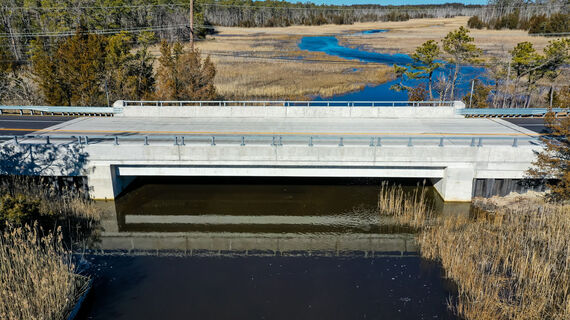
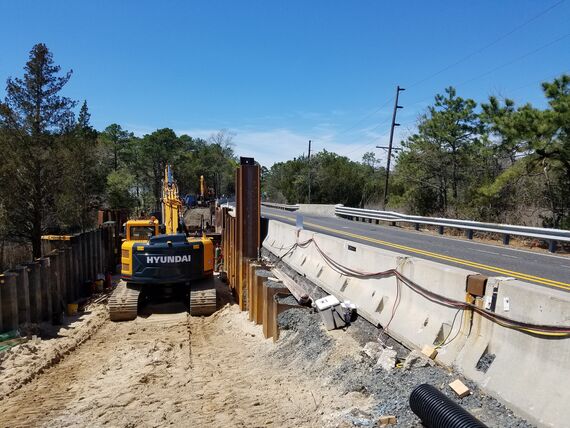
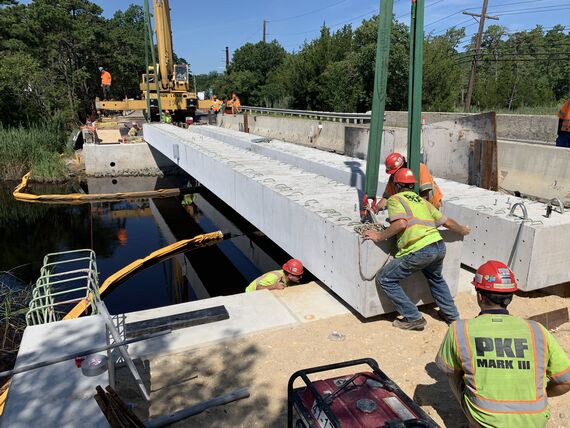
HOW WE HELPED
McCormick Taylor designed the new bridge to have one 12-foot lane and an 8-foot wide outside shoulder in each direction. McCormick Taylor also performed the crash analysis during concept development, which demonstrated that the crash rate along the bridge was lower than the statewide average but showed fixed object crashes were overrepresented. To improve the safety of the traveling public, the project replaced the substandard normal crowned broken back curves to improve the horizontal alignment and meet current NJDOT standards. A single superelevated curve was provided across the structure.
McCormick Taylor reduced the construction duration by combining design Stages 2 and 3 into a single work stage. Combining these stages also resulted in a safer work zone for both construction personnel and the traveling public. Possible construction delays associated with utility coordination were eliminated by relocating existing utilities prior to the start of construction.
A gas main was relocated outside the construction footprint prior to the start of construction using directional drilling. Extensive coordination was performed in order to advance Atlantic City Electric's (ACE) future 69 kV transmission upgrade with a steel pole as part of this project’s advanced utility relocation effort. This allowed the aerial power lines to be relocated outside of the construction footprint prior to construction and reduced future disruption by ACE with their transmission upgrade in the area. Once bridge construction was complete, telecommunication utilities were relocated under the bridge in fiberglass conduits located between the precast concrete spread box beams.
RESULTS
McCormick Taylor developed a bridge design that minimized environmental, utility, and travel impacts while maximizing resiliency and sustainability.
The new bridge was designed to be under the stormwater management thresholds and included a single span, prestressed concrete spread box beam bridge with King Pile substructure units and a semi-integral abutment configuration. This allowed for an innovative construction application that limited impacts to the adjacent Edwin B. Forsythe National Wildlife Refuge and the Category 1 waterway. Avoiding impacts to the wildlife refuge meant that right-of-way acquisition and Section 4(f) involvement were not required. It also provided a jointless bridge system that minimizes future maintenance costs and extends the service life of the bridge.
The steel sheet pile wall was utilized because it did not require extensive excavation and temporary shoring for construction, which would have impacted the right-of-way, environmental permitting, construction schedule, and construction cost. A steel sheet pile retaining walls and King Pile abutment system were designed to include a sacrificial layer to account for potential future section loss. This design practice, combined with a protective top coating on steel sheet pile retaining walls and King Pile abutments, lends itself as a low maintenance system over its service life. It requires no regular proper protective coating, which makes it the most economically feasible structure while providing the least problematic and low maintenance system.
The increased shoulder width of the new bridge allows pedestrians and cyclists to cross the bridge more safely and provides a safer roadside design. The project also considered non-roadway traffic, and McCormick Taylor performed calculations during construction to make sure that the incomplete bridge could support a yacht being transported to the nearby Viking Yachting Center.
AWARDS
2022 Distinguished Award, ACEC/NJ Engineering Excellence Awards
